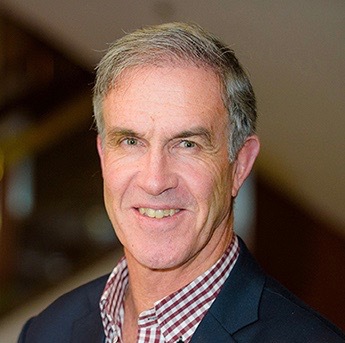
Q&A with Peter Connor, founder of AlternativelyLegal, and author of the book ‘A New Vision of Corporate Lawyers’.
Can you give us an overview of your book and explain how it addresses the concept of human transformation in the field of corporate law?
The book makes the case for why corporate lawyers, legal departments and firms should head in a different direction and adopt a new paradigm. It outlines the changing landscape for lawyers, then defines the change imperative, before painting a very clear picture of what the future could look like.
That new vision is for lawyers to become businesspeople, not just lawyers; to regularly provide business input and advice, not just legal advice; and to regularly do business work, not just legal work. I refer to such a lawyer as a T-Shaped Lawyer, a form of legal expert business generalist as shown below.
That is what I mean by human transformation – fundamentally changing the work that lawyers do and their capabilities to do that new work. Re-imagining your work and reinventing yourself.
Why adopt this new vision? The book outlines various reasons but the primary reason is because it turns out that working in the business, not on the business, is the best way to add more value for, and as a result be more valued by, clients. How do I know that? Through my own personal experience working as a lawyer for about 30 years around the world and from the feedback from thousands of lawyers in my workshops who are attracted to this vision but are still in the process of adopting it.
The book is not a prediction of the future but rather a guidebook for lawyers to create their own future.
You mention that, in the past, the focus of lawyers has generally been on their work, and not following trends and changes. Has the situation changed now and, if not, what is needed to adapt?
Therein lies one of the huge obstacles to change in the corporate legal industry. The changes that are happening are almost exclusively to systems and processes, not to people.
Almost all lawyers are not fully aware of this changing landscape, don’t make the most of themselves professionally, are not contributing as much as they could for their clients and their firms/depts, are not adapting to what is starting to happen to their work, and not preparing themselves for what might happen in the future.
To engage more people in this change process, leaders of legal departments and firms need to make the change about people (the work they do and their professional development) and provide them with an inspiring vision of what the future could look like. That is precisely what my book does.
What is the current gap between working in-house compared to in a law firm? How do you think it is going to change?
Working in-house as a lawyer is a completely different job to working in a law firm. Different work, different priorities, different challenges, and different opportunities to name a few. And I believe that gap will continue to widen.
However, the reason that I mention the gap in the book is because, despite the differences which you need to keep in mind, it is possible for all players in the industry to align and play different roles to bring this new vision into reality. If that can be done, everyone will benefit but the industry will look very different to what it does today.
As in-house counsel increasingly rely on technology to handle routine legal tasks, what do you foresee as the implications for their expectations of external counsel?
Richard Susskind talks about increasingly capable machines encroaching relentlessly on the work that has been traditionally done by lawyers. Generative Artificial Intelligence has now made that prediction very real and immediate. That has obvious implications for in-house lawyers – it can now free you up from a lot of traditional work which is why you need to understand what different work you could do and start moving in that direction right away.
As far as external counsel is concerned, I think that at a minimum, in-house counsel will now expect, if not demand, that law firms are making optimal use of these technologies to reduce the cost of doing any work farmed out to them. But frankly, if I was working in-house again, I would expect my firm to also help me to utilise these technologies in my company.
What is the ‘Businessperson Mindset’ specifically in the context of in-house counsel?
How can lawyers cultivate the right mindset to embrace this transformation towards becoming a businessperson?
I devised the Businessperson Mindset™ to be very specific and clear about what is required to become a businessperson, not just a lawyer. It is NOT the same thing as being business-minded, understanding the business or having business acumen. All these things are necessary but not sufficient.
The book explains in detail what is involved but in broad terms for an in-house lawyer it involves thinking of yourself as in the business not just working on the business.
To realise this vision of a T-Shaped Lawyer you need to adopt this mindset plus two others that I cover in my T-Shaped Lawyer Framework™ that is the subject of the second book in the series.
How do you see the role of in-house counsel evolving in terms of strategic decision-making within organisations?
Becoming a T-Shaped Lawyer, as explained above, will necessarily move you into a more strategic role and mean doing more strategic, and frankly more interesting, work. That said, there is a lot of tactical work and advice that you can and should do to contribute in important ways to your company.
Whether it is strategic or tactical work or advice, the key point to remember is that as a lawyer you rarely if ever make the decision. I explain this point in some detail in the book.
Where would you suggest lawyers start to look for opportunities to provide business advice and do business work within their organisations?
In the book I explain that business partnering, providing business advice and input, is something every lawyer, irrespective of seniority, can start doing more frequently tomorrow.
To engage more people in this change process, leaders of legal departments and firms need to make the change about people and provide them with an inspiring vision of what the future could look like
Could you give us a glimpse into some strategies for lawyers who want to embark on this transformative journey?
If you adopt this new vision of a T-Shaped Lawyer as I describe it, then it will change everything including your strategies at both an individual and team level.
At an individual level, it will mean that you can start tomorrow working in a different way as outlined in the book. It will also mean a fundamental change to your approach to professional development. No longer will it be sufficient to just go to a few conferences, read a few random articles and take the odd random course. You will need a structured framework such as the T-Shaped Lawyer Framework™ discussed below.
At a minimum, legal departments will need strategies to change their current, to identify and start doing this new work that I refer to and to support the professional development of the team to do this new work
At a legal department level, it changes everything from strategy to culture to resourcing to metrics etc. At a minimum, legal departments will need strategies to change their current work (through AI and other means that I call work management), to identify and start doing this new work that I refer to (using a range of innovation tools) and to support the professional development of the team to do this new work. Change Management will need to be an overlay to all of these changes.
You mentioned that your book is part of a series. Could you give us a sneak peek into what topics you plan to explore in the subsequent books and how they build upon the ideas presented in the first book?
The first book paints the picture of what a new future could look like for lawyers and why lawyers might want to aspire to that vision. I intend to cover How to turn that vision of the future into reality at an individual lawyer level, at a legal department level and at a firm level in the following books in the series if there is sufficient interest in the first book.
The reason I chose to do it this way is because there is a lot of material in the first book to digest. Plus, I believe it is important for me, just as it is for leaders of legal depts and firms, to make the case for change, and to spell out clearly what that change looks like, before diving into the detail of how to realise that change. If you don’t do it that way, and most don’t, then how can you convince sceptical lawyers that they should change? How can lawyers know what new capabilities they will need and how to use those in their work until they know what they need these capabilities for?
I’m just finishing another book in the series “The T-Shaped Lawyer Framework™” that explains what new skills, competencies, qualities, knowledge, and mindsets are necessary for individual lawyers to become T-Shaped Lawyers. It provides the basis for a professional development framework that can be used by any lawyer. Legal departments and firms can also use it for all their lawyers – something I have helped clients to do for multiple lawyers.
If there is interest in the first two books, then I will write a book that covers my frameworks for legal departments and firms to adopt this new vision. Taken together these frameworks offer the promise of a fundamental change at all levels for the corporate legal industry in this one new direction.

Peter Connor is Founder and CEO of Alternativelylegal. He can be reached at peter.connor@alternativelylegal.com or on LinkedIn at linkedin.com/in/petercon
A free copy of his book is available at https://peterconnor. legalbusinesslibrary.com/


